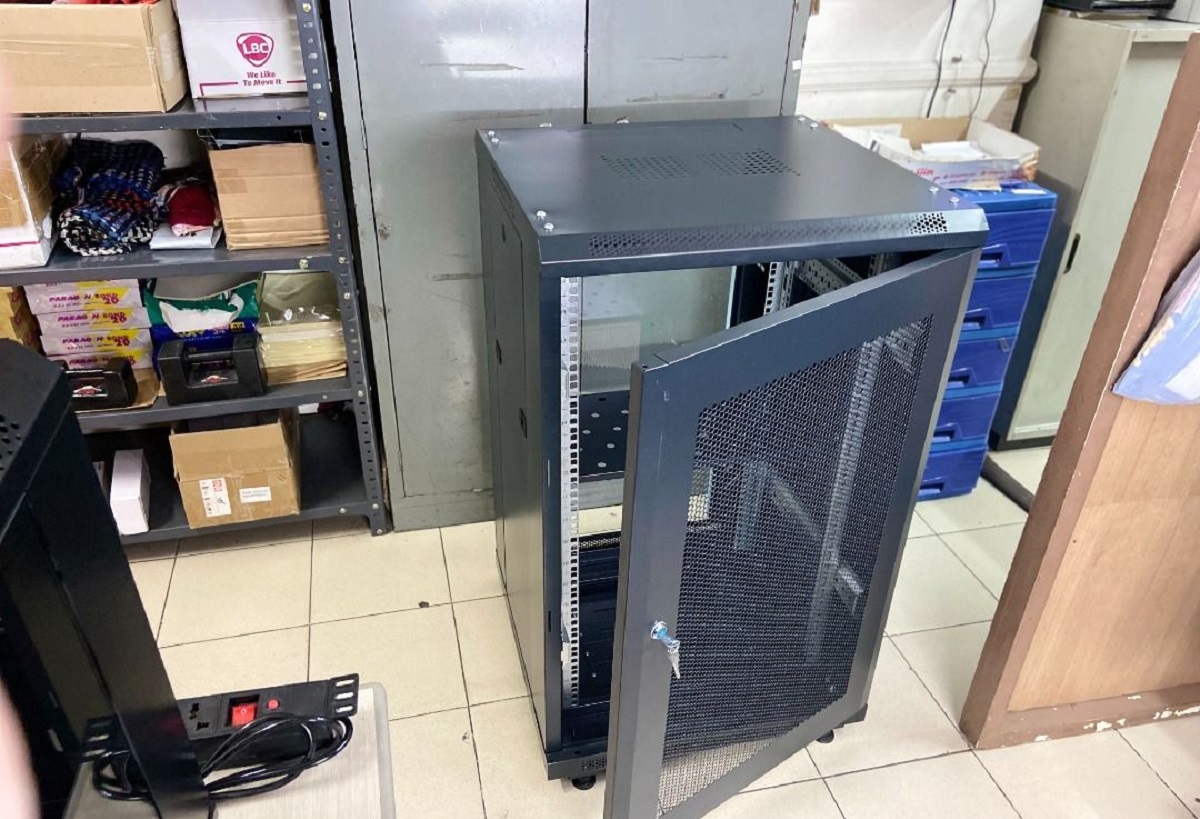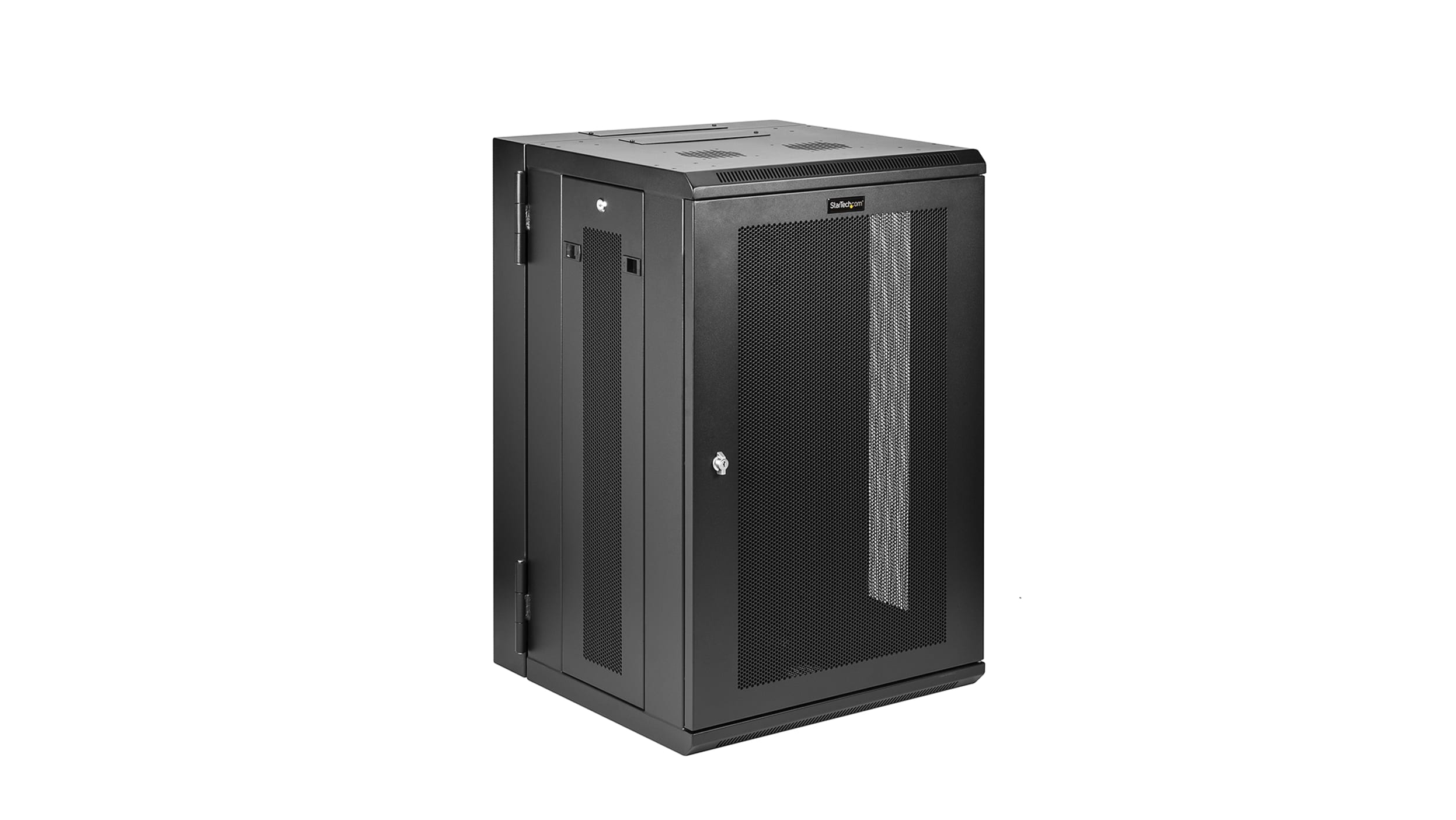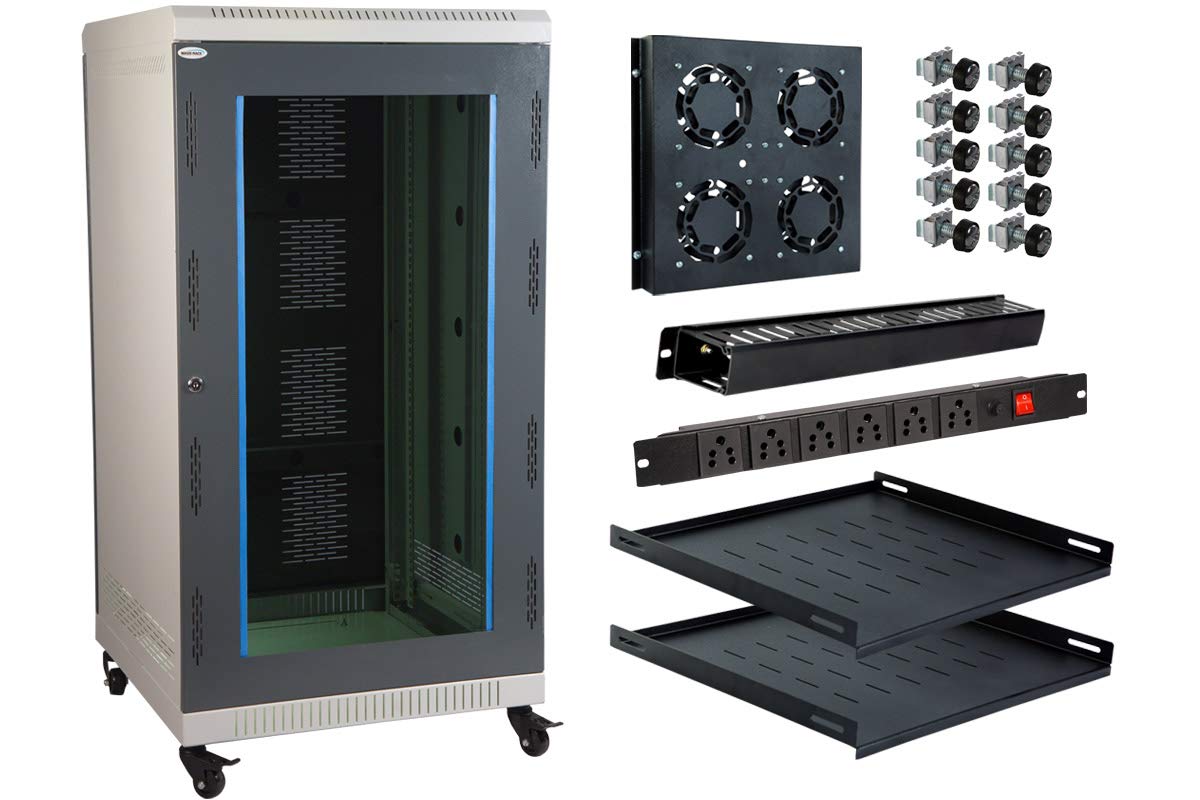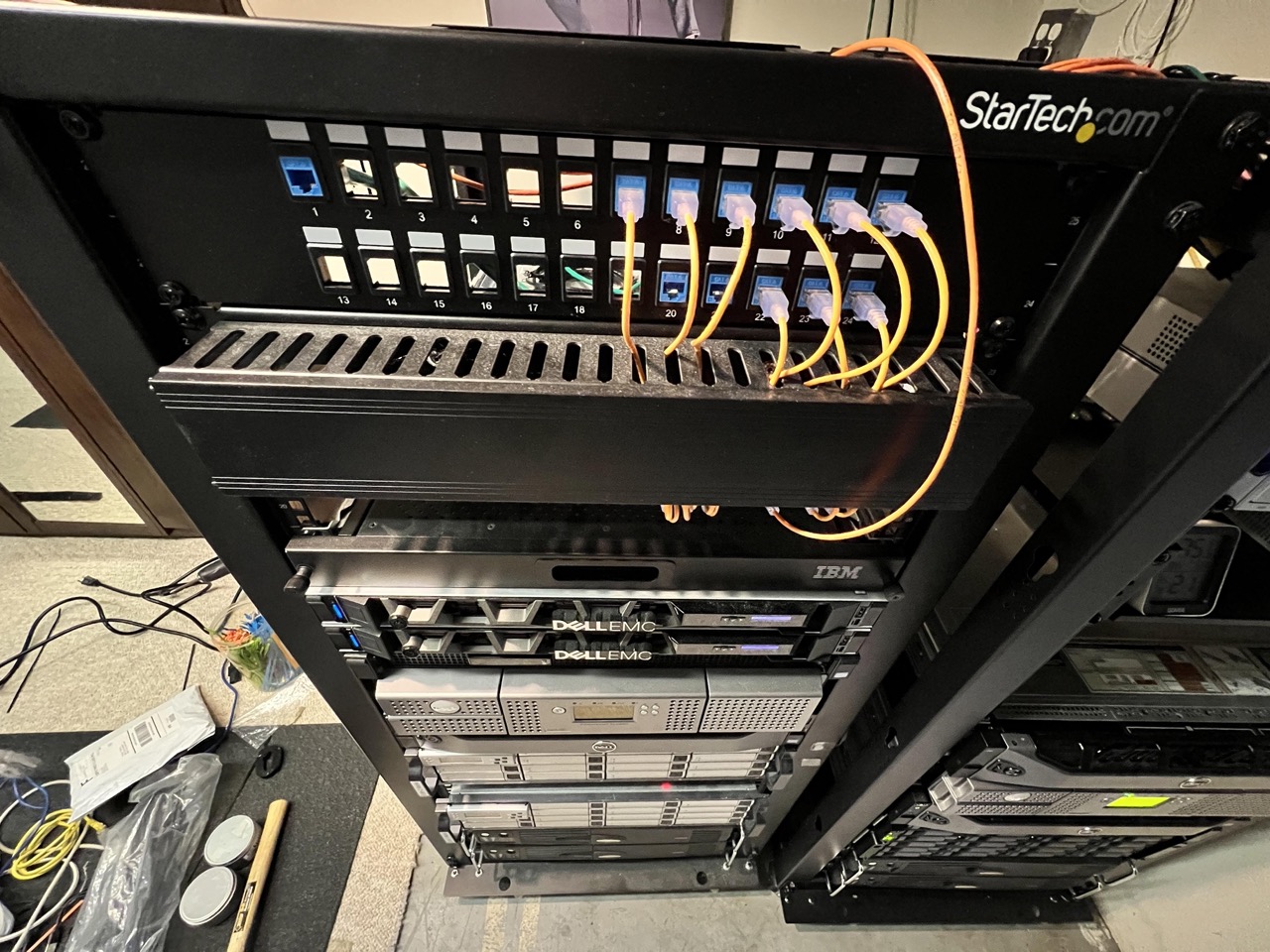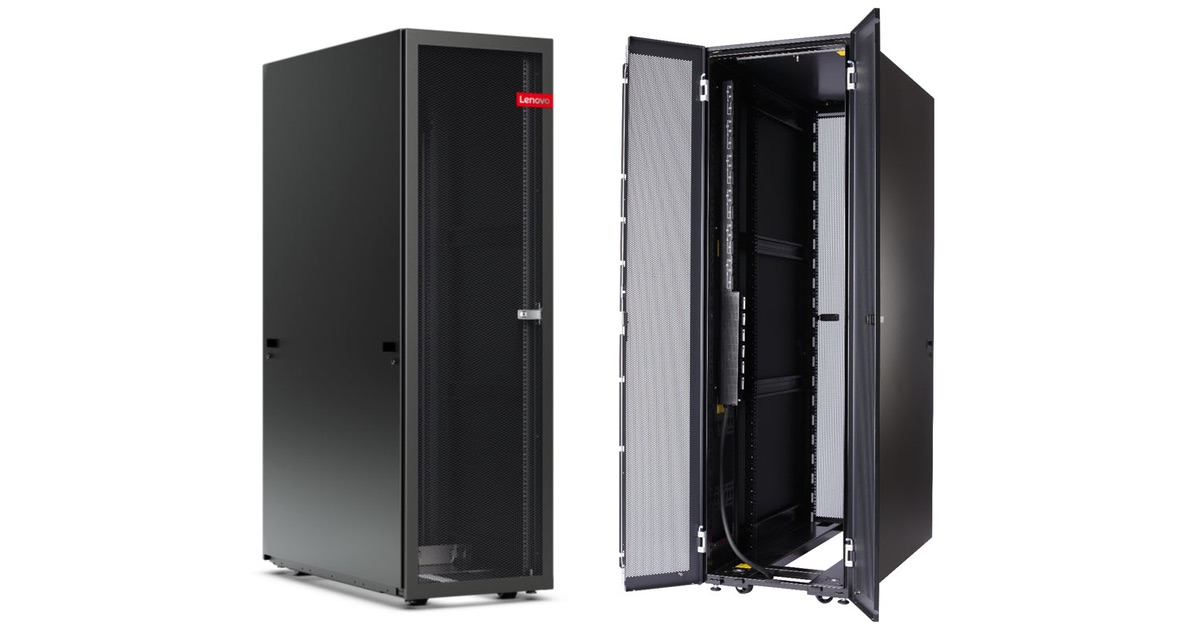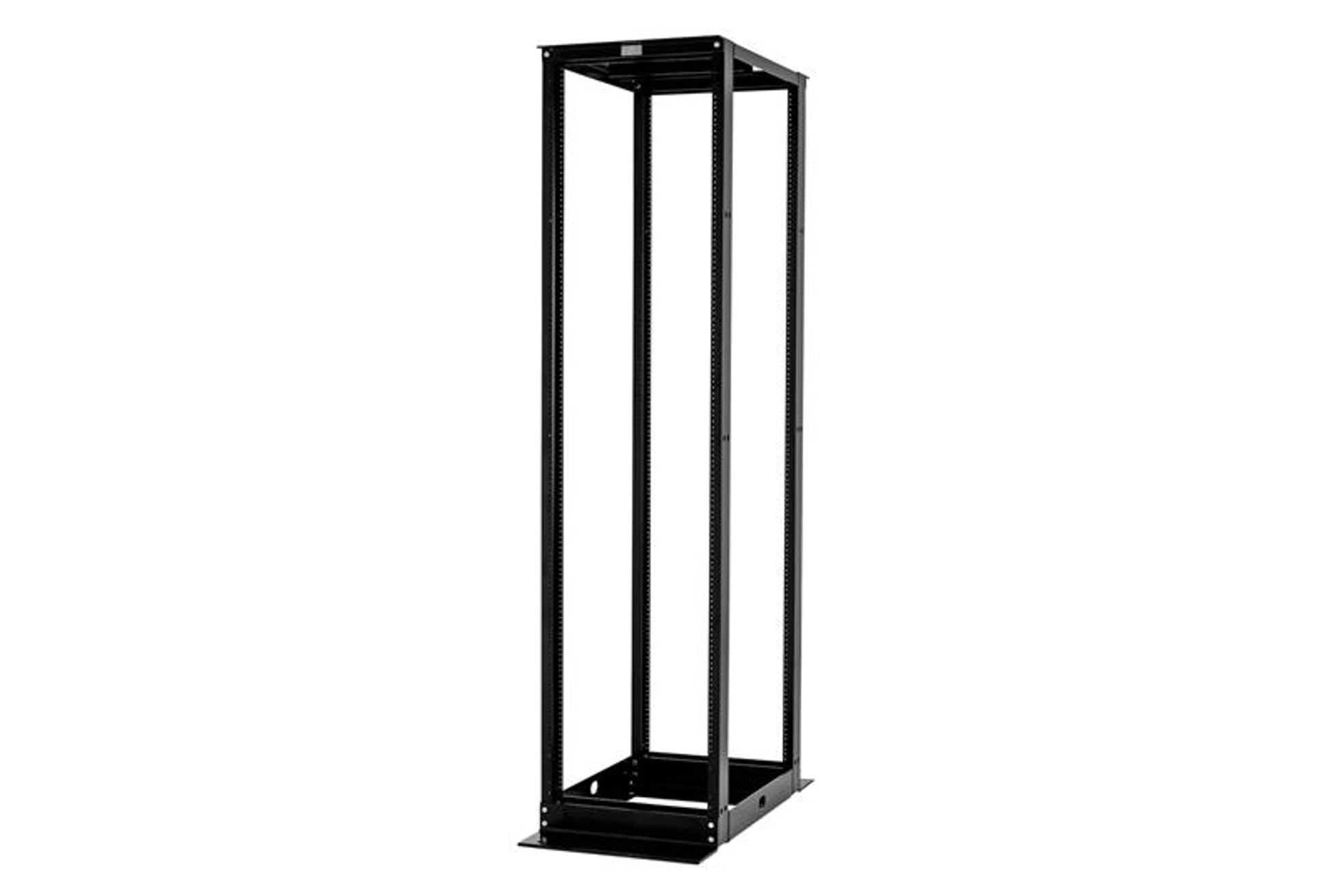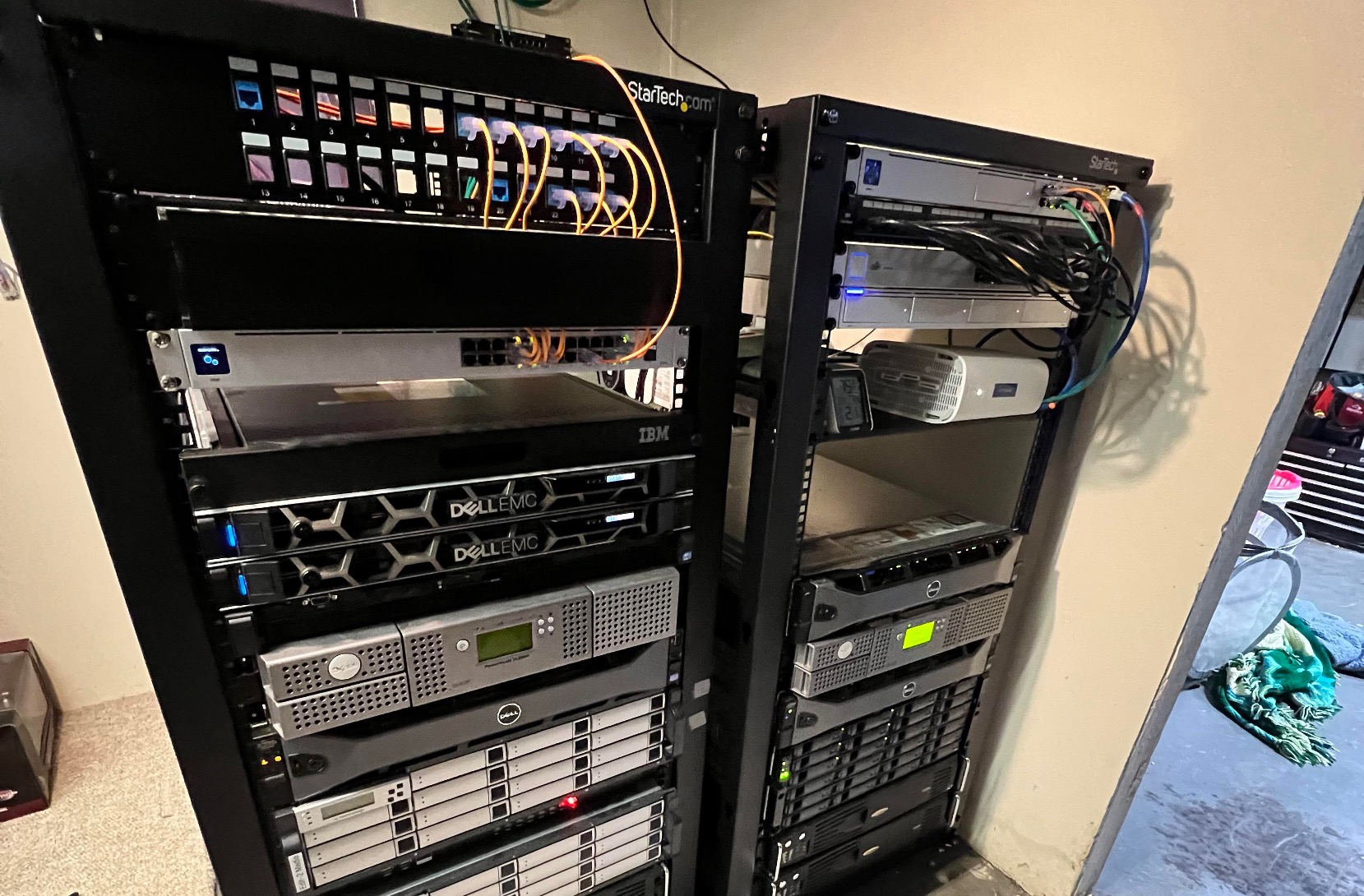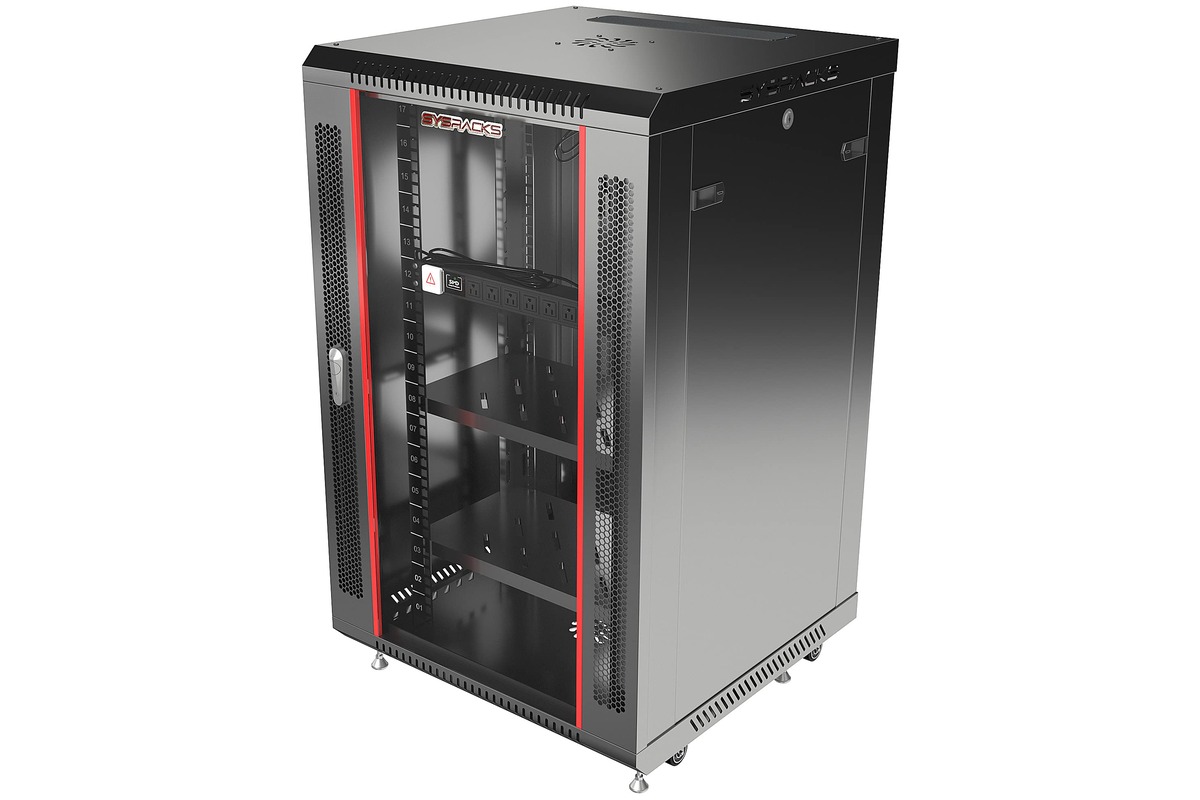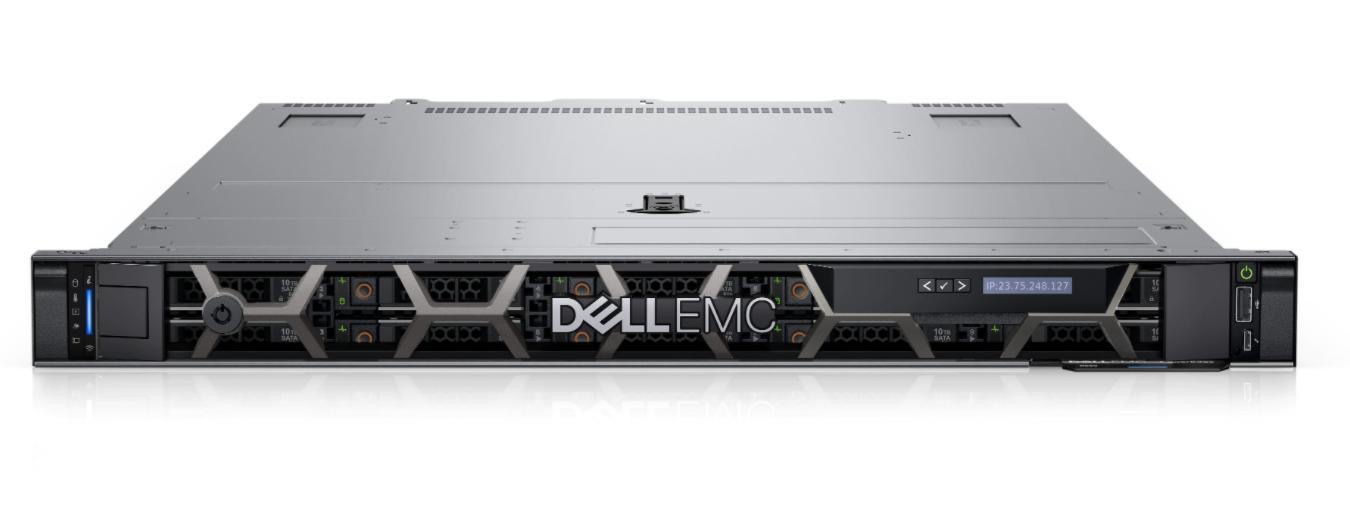Introduction
Welcome to the world of server racks, where organization and efficiency are key. Server racks are essential components in data centers and network infrastructure, providing a centralized location to house and manage servers, networking equipment, and other critical IT components. These racks come in various sizes and configurations to accommodate different needs, and one popular option is the 18U server rack.
An 18U server rack is a specific type of rack that offers ample space for mounting and securing equipment. The “U” in 18U stands for “rack unit,” which is a standardized unit of measurement for the height of server racks. Each rack unit is equivalent to 1.75 inches or 44.45 millimeters in height. Therefore, an 18U server rack is approximately 31.5 inches or 800 millimeters tall.
18U server racks are commonly used in small to medium-sized businesses, as well as in home offices and residential settings. They provide a compact and efficient solution for housing servers, switches, routers, patch panels, and other networking equipment. By organizing all the components into a single rack, it becomes easier to manage and maintain the IT infrastructure.
Whether you are setting up a small office network or a data center, the height of your server rack is an important consideration. The size of the rack will determine the amount of equipment that can be installed and the available space for future expansion. An 18U server rack strikes a good balance between size and capacity, offering enough room for several servers and additional equipment, while still being compact enough to fit in limited spaces.
In this article, we will explore the height, uses, and considerations when purchasing an 18U server rack. So, let’s dive in and discover the world of 18U server racks and how they can benefit your IT infrastructure.
What is an 18U server rack?
An 18U server rack is a type of rack used for housing servers, networking equipment, and other IT components. The “U” in 18U stands for “rack unit,” which is a standard unit of measurement for the height of server racks.
A rack unit is equivalent to 1.75 inches or 44.45 millimeters in height. Therefore, an 18U server rack is approximately 31.5 inches or 800 millimeters tall. The rack is designed with multiple vertical mounting slots or holes at a specific distance to accommodate the installation of equipment.
The main purpose of an 18U server rack is to provide a centralized and organized solution for managing IT infrastructure. It allows for the efficient installation and mounting of servers, switches, patch panels, power distribution units (PDUs), and other networking devices.
One of the key advantages of an 18U server rack is its compact size. Compared to larger racks, an 18U rack takes up less space, making it an ideal choice for small to medium-sized businesses, home offices, and residential settings where floor space may be limited.
Additionally, the 18U height provides sufficient capacity to house several servers and networking equipment. This versatility allows for the consolidation of IT resources into a single rack, simplifying management, and facilitating easy access for maintenance and upgrades.
Moreover, 18U server racks are often equipped with features that enhance functionality and security. For example, they may have removable side panels for easy access, adjustable mounting rails to accommodate various equipment sizes, and cable management options to keep cables organized and tidy.
Overall, an 18U server rack is an essential component for ensuring a well-organized and efficient IT infrastructure. It offers the right balance between size and capacity, making it a popular choice for businesses and individuals who require a compact yet functional solution for housing their servers and networking equipment.
Standard Rack Unit Measurements
Understanding the concept of rack units is essential when dealing with server racks. A rack unit, usually represented as “U,” is a standardized unit of measurement for the height of server racks and other network equipment. Each rack unit is equivalent to 1.75 inches or 44.45 millimeters in height.
The standard rack unit measurements are as follows:
- 1U: Also known as 1U or 1RU, this is the smallest rack unit size available. It measures 1.75 inches or 44.45 millimeters in height. 1U server racks are commonly used for low-profile equipment such as patch panels and network switches.
- 2U: A 2U server rack is approximately 3.5 inches or 88.9 millimeters tall. It provides double the height of a 1U rack, offering more space for larger devices.
- 4U: 4U server racks are around 7 inches or 177.8 millimeters in height. They offer even more space for equipment, making them suitable for larger servers and storage units.
- 8U: With a height of approximately 14 inches or 355.6 millimeters, 8U server racks are commonly used for housing bulky equipment such as blade servers and high-capacity storage devices.
- 18U: An 18U server rack measures around 31.5 inches or 800 millimeters in height. It offers a good balance between size and capacity, providing sufficient space for multiple servers and networking equipment.
- 42U: Considered the industry standard and often referred to as a full-sized rack, a 42U server rack stands at approximately 73.5 inches or 1866.9 millimeters tall. These racks are capable of housing a large number of servers and network devices.
By using these standardized measurements, server racks can be easily matched with equipment of corresponding heights. This ensures compatibility and facilitates efficient organization within the rack.
It’s important to note that the height of the rack does not indicate the depth or width. Server racks come in various depths and widths, allowing for customization based on specific equipment requirements.
Now that we understand the standard rack unit measurements, let’s dive deeper into the specifics of an 18U server rack and discover its height and uses in more detail.
How tall is an 18U server rack?
An 18U server rack is approximately 31.5 inches or 800 millimeters in height. The height of a server rack is determined by the number of rack units (U) it encompasses, with each unit measuring 1.75 inches or 44.45 millimeters tall.
With its 18U height, an 18U server rack offers a compact yet spacious solution for housing servers, networking equipment, and other IT components. It strikes a good balance between size and capacity, making it a versatile choice for small to medium-sized businesses, home offices, and residential settings.
Due to its relatively modest height, an 18U server rack can be easily installed in various environments without taking up excessive floor space. This flexibility is particularly valuable when space is limited or when multiple racks need to be stacked together to accommodate a growing IT infrastructure.
Moreover, the 18U height allows for efficient utilization of vertical space within the server rack. It provides enough room to mount and secure multiple servers, switches, patch panels, power distribution units (PDUs), and other networking devices. This not only facilitates organization and accessibility but also helps in maintaining proper airflow and cooling within the rack.
When considering the height of an 18U server rack, it’s essential to account for the additional height clearance required for cables, connectors, and any protruding components. It’s recommended to allocate some space between the top of the equipment and the roof of the rack to ensure proper ventilation and management of cables.
Overall, the height of an 18U server rack provides a balance between space-saving efficiency and the necessary capacity to house essential IT infrastructure. It is a popular choice among businesses and individuals who require compact yet functional server rack solutions.
Next, let’s explore the various uses and applications of an 18U server rack in different environments.
Uses of an 18U Server Rack
The 18U server rack is a versatile solution that can be used in a wide range of environments to house and organize IT equipment. Here are some common uses of an 18U server rack:
- Small to Medium-Sized Businesses: In small to medium-sized businesses, space is often limited, and having a dedicated area to house servers and networking equipment is crucial. An 18U server rack offers the perfect size to consolidate servers, switches, patch panels, and other necessary equipment. It allows for efficient organization, easy access, and proper cable management, contributing to a streamlined and well-structured IT infrastructure.
- Home Offices and Residential Settings: As more people work remotely or operate home-based businesses, the need for a compact and professional IT setup is increasing. An 18U server rack provides a space-saving solution for housing servers, routers, modems, and other networking equipment in a home office or residential setting. It helps maintain a tidy and organized workspace while ensuring reliable and efficient network connectivity.
- Remote and Branch Offices: Enterprises with remote or branch offices often require a compact yet fully functional IT setup. An 18U server rack can house the necessary equipment, such as server blades, switches, and patch panels, enabling remote offices to connect securely and efficiently to the corporate network. It simplifies infrastructure deployment and management in these satellite locations.
- Data Centers: In larger data centers, where space optimization is crucial, the 18U server rack can be used to accommodate specific equipment needs. For instance, it can be utilized for testing and development environments, backup and disaster recovery setups, or for segregating specific applications or services. Its compact size allows for efficient use of space while still providing the necessary capacity to house critical IT components.
- Networking and Telecommunication Installations: Telecommunication providers, network service providers, and organizations involved in networking infrastructure often require server racks for housing networking appliances, racks, and patch panels. An 18U server rack provides the appropriate height and depth to house these critical components while allowing for proper cable management and quick access for maintenance and troubleshooting.
- Equipment Testing and Research Environments: In testing and research environments, where a variety of equipment and configurations need to be tested and evaluated, an 18U server rack can provide a dedicated space for these activities. The rack can be equipped with specific hardware and software configurations, allowing for efficient testing, troubleshooting, and research in a controlled and organized manner.
These are just a few examples of the many uses of an 18U server rack. The versatility and compact design of the rack make it a valuable asset in various environments, enabling efficient organization, easy access, and proper management of IT infrastructure.
Now that we know the uses of an 18U server rack, let’s delve into some considerations to keep in mind when purchasing one.
Considerations when purchasing an 18U Server Rack
When looking to purchase an 18U server rack, there are several important factors to consider. These considerations will help ensure that the rack meets your specific requirements and fits seamlessly into your IT infrastructure. Here are some key considerations to keep in mind:
- Size and Dimensions: Before making a purchase, measure the space where you plan to install the 18U server rack. Ensure that the rack’s height, width, and depth dimensions align with your available space. Additionally, consider factors such as doorways, hallways, and clearance for easy installation and access to the rack.
- Weight Capacity: Evaluate the weight capacity of the 18U server rack to ensure it can support the equipment you intend to mount. Factor in the weight of servers, switches, power distribution units (PDUs), and other devices that will be housed in the rack. It is important not to exceed the weight limit to maintain the rack’s structural integrity.
- Construction and Durability: Look for a server rack constructed from sturdy materials, such as steel, to ensure durability and longevity. Check for reinforced corners, solid construction, and secure mounting options to safeguard the equipment within the rack. Additional features like locking doors and removable side panels can provide added security and ease of maintenance.
- Cable Management: Efficient cable management is crucial for maintaining a tidy and organized IT infrastructure. Consider whether the 18U server rack offers cable management options, such as cable management rings, vertical cable managers, or built-in cable trays. These features help route and manage cables, minimizing clutter and simplifying future maintenance.
- Airflow and Cooling: Adequate airflow and cooling are essential to prevent equipment overheating. Look for an 18U server rack that provides proper ventilation, such as perforated front and rear doors or built-in fans. This ensures efficient airflow and helps maintain optimal operating temperatures for your equipment.
- Accessibility and Front/Back Options: Consider the accessibility of the 18U server rack. Look for racks that provide easy access to the front and back of the equipment for maintenance and changes. Some racks offer options for reversible mounting to provide flexibility and convenience in setting up your IT infrastructure.
- Compatibility with Equipment: Ensure that the 18U server rack is compatible with the equipment you plan to install. Check the rack’s mounting options, such as adjustable mounting rails or cage nuts, to accommodate different sizes and form factors of servers, switches, and other networking equipment.
- Growth Potential: Consider the future growth of your IT infrastructure. Assess whether the 18U server rack has expansion capabilities, such as additional rack units or the ability to stack or join multiple racks together. This allows for scalability and the accommodation of future equipment needs.
By taking these considerations into account, you can select an 18U server rack that best meets your requirements and integrates seamlessly into your IT environment.
Now that we have explored the considerations, let’s wrap up our discussion and summarize what we’ve covered.
Conclusion
An 18U server rack is a valuable asset in managing and organizing IT infrastructure. With its compact size and ample capacity, it serves as an ideal solution for small to medium-sized businesses, home offices, and various other environments.
By understanding the standard rack unit measurements, we have learned that an 18U server rack measures approximately 31.5 inches or 800 millimeters in height. This allows for the efficient housing of servers, switches, patch panels, and other networking equipment while optimizing space utilization.
We explored the various uses of an 18U server rack, including its applications in small to medium-sized businesses, home offices, remote offices, data centers, networking installations, and research environments. In all these settings, the 18U server rack provides a compact, organized, and secure solution for housing critical IT components.
When purchasing an 18U server rack, it is important to consider factors such as size and dimensions, weight capacity, construction and durability, cable management options, airflow and cooling, accessibility, compatibility with equipment, and growth potential. Taking these factors into account ensures that you select a rack that meets your requirements and facilitates the smooth operation of your IT infrastructure.
In conclusion, an 18U server rack offers a perfect balance of size, capacity, and functionality for housing servers, networking equipment, and other IT components. By investing in a well-designed and properly configured 18U server rack, you can enhance the organization, accessibility, and maintenance of your IT infrastructure, leading to improved efficiency and reliability.







